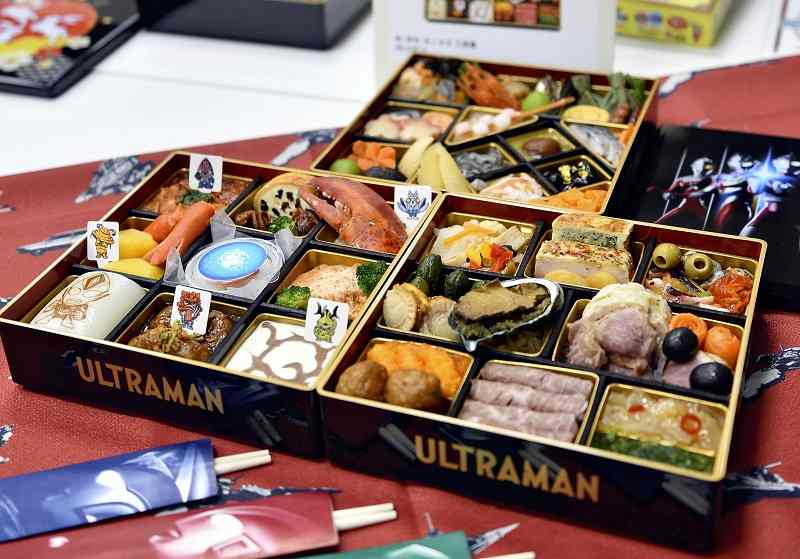Wave of global price hikes sweeps over Japan’s traditional New Year meal

An osechi meal offered by Takashimaya Co. in Chuo Ward, Tokyo.
6:00 JST, September 24, 2022
Russia’s invasion of Ukraine is casting a long shadow over preparations for the upcoming New Year festivities in Japan.
Even as the heat of summer lingers, competition for sales has started heating up among department stores for advance orders of boxed osechi meals, the assortment of traditional dishes eaten during the New Year holidays.
But the wave of rising global prices in the wake of Russia’s action has swept over a wide range of food items, leading makers to search for alternatives for ingredients that are hard to get or to use lower-quality items in order to keep down prices.
Heading the lineup of osechi meals offered by major department store operator Takashimaya Co., which began accepting online orders on Sept. 16, is its “Yoridori irodori osechi” — which basically means a “colorful choice of osechi.” Priced from ¥12,000, customers can choose 12 items from an assortment of 30 Japanese, Western and Chinese dishes as well as sweets.
Next year, the world will have its third New Year’s Day since the start of the coronavirus pandemic. Over that time, people refraining from going out turned instead to home consumption and online orders for osechi products increased.
“Reservations have been strong compared to last year,” said a Takashimaya staff member in charge. “The culture has spread to include osechi meals for one.”
This season, Takashimaya is offering about 1,150 items and, with rising costs for seafood and other products, has raised its prices an average of 7%.
Daimaru Matsuzakaya Department Stores Co., which started online orders on Thursday, has hiked its osechi prices between 5% and 10%. “Our purchase costs for ingredients, boxes and other items have increased, so it was necessary to take the decision to raise prices,” a Daimaru official said.
Likewise, Isetan Mitsukoshi Ltd. plans price increases of more than 10%.
Weaker yen also a factor
The prices of food items that give the osechi meals their distinctive visual appeal have been soaring, most notably for seafood products.
According to the consumer price index for July released by the Internal Affairs and Communications Ministry, year-on-year price increases were 21.9% for salmon, 15.5% for octopus and 13.8% for salmon roe. Imports from Russia have dropped, leading to higher market prices, while soaring fuel costs for fishing vessels are also having an impact.
“Many osechi ingredients are imported,” said Naoko Kuga, a senior researcher at the NLI Research Institute who specializes in consumption trends. “The rapid depreciation of the yen has also been a factor.”
The difficulty in procuring crab has led some makers to substitute shrimp for that item.
Convenience store chain operator Lawson, Inc. offers a ¥1,706 meal called the “Mottainai osechi,” meaning “waste not, want not,” which uses herring roe that is not of standard shape or size, as well as offcuts of datemaki rolled omelet. In consideration of the environment, Lawson cuts down on plastic by using paper or other materials for its packaging. The company said it started accepting orders on Sept. 13 and sold out all 500 meals it had panned to sell.
Optimism over sales
Department store operators are placing high hopes on the osechi sales war.
This is because, despite a plunge in the number of foreign visitors to Japan who had previously propped up pre-pandemic sales, Japanese consumers are now willing to spend significantly more.
Supervised by chefs from high-end Japanese restaurants, there are even some osechi meals priced at over ¥300,000 lavished with premium items such as lobster and karasumi roe.
According to research firm Fuji Keizai Co., the market for osechi meals grew amid the pandemic.
“Even if the overall number of products sold decreases due to price hikes, it’s likely the total value of sales will rise,” Fuji Keizai’s chief researcher Miwa Funase said.
"Business" POPULAR ARTICLE
JN ACCESS RANKING






